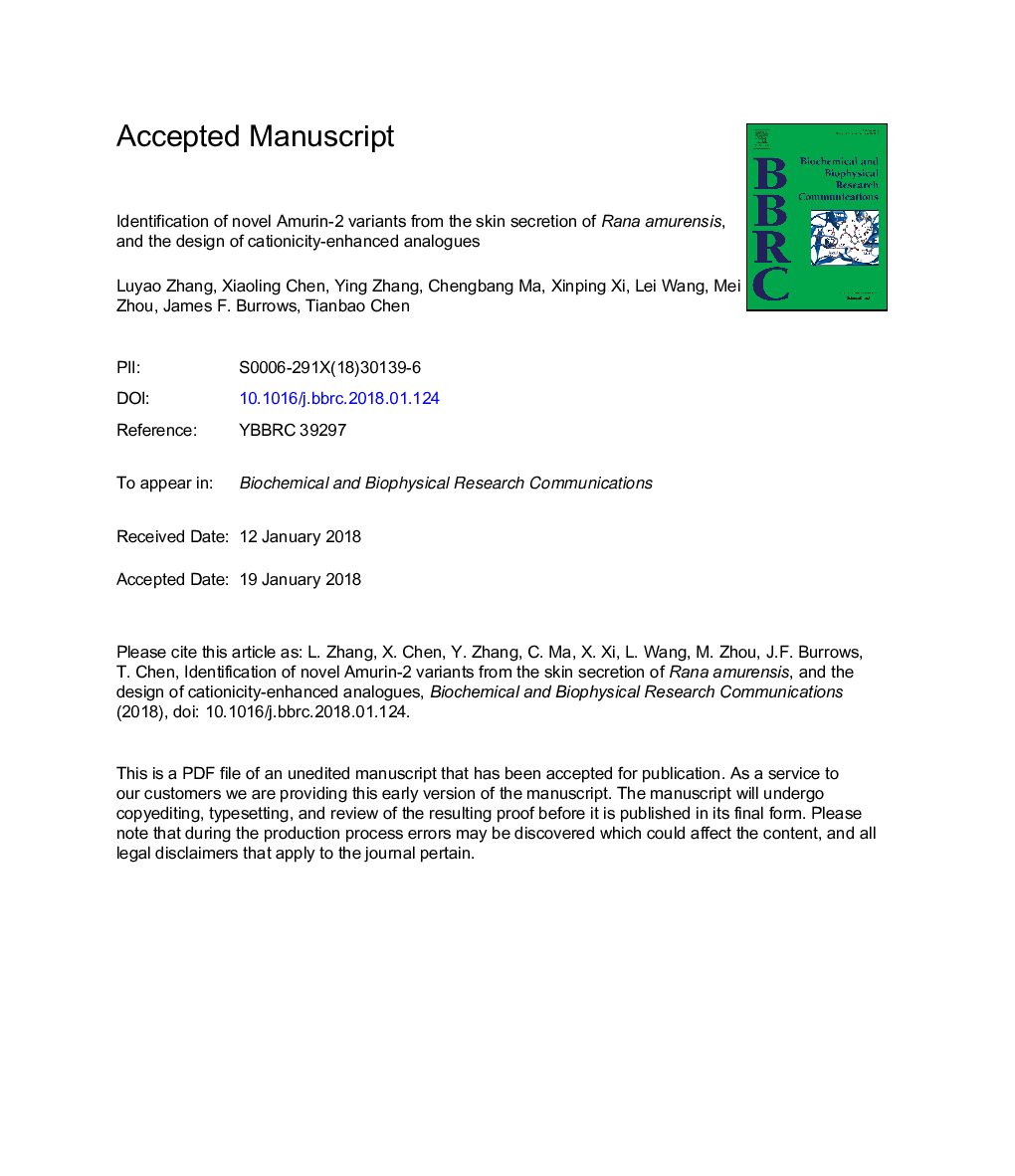| Article ID | Journal | Published Year | Pages | File Type |
|---|---|---|---|---|
| 8293745 | Biochemical and Biophysical Research Communications | 2018 | 11 Pages |
Abstract
Rana amurensis is important in Chinese medicine as its skin secretions contain abundant bioactive peptides. Here, we have identified the antimicrobial peptide Amurin-2 and three highly-conserved variants, Amurin-2a, Amurin-2b and Amurin-2c through a combination of molecular cloning and MS/MS fragmentation sequencing. Synthetic replicates of these peptides demonstrate potent antimicrobial activity against S. aureus, whilst some have activity against C.albicans and even resistant bacterial MRSA. Furthermore, two Lys-analogues (K4-Amurin-2 and K11-Amurin-2) were designed to improve the bioactive function and the antimicrobial activity of K4-Amurin-2 against E.coli was enhanced distinctly. In addition, the two modified peptides also showed more potent activity against S. aureus, C. albicans and MRSA strains. Meanwhile, these peptides showed inhibitory effect on the cell viability of several cancer cells. As a result, these structural and functional studies of Amurin-2 variants and analogues could provide insights for future antimicrobial peptide design.
Keywords
FBSAmphibian skin secretionHDPsHC50MICIC50AMP3-(4,5-dimethylthiazol-2-yl)-2,5-diphenyltetrazolium bromideMHbMTTMRSAmethicillin-resistant Staphylococcus aureusMinimum inhibitory concentrationcircular dichroismfoetal bovine serumUTR یا untranslated regions untranslated regionMueller-Hinton brothhalf maximal inhibitory concentrationAntimicrobial peptide
Related Topics
Life Sciences
Biochemistry, Genetics and Molecular Biology
Biochemistry
Authors
Luyao Zhang, Xiaoling Chen, Ying Zhang, Chengbang Ma, Xinping Xi, Lei Wang, Mei Zhou, James F. Burrows, Tianbao Chen,
